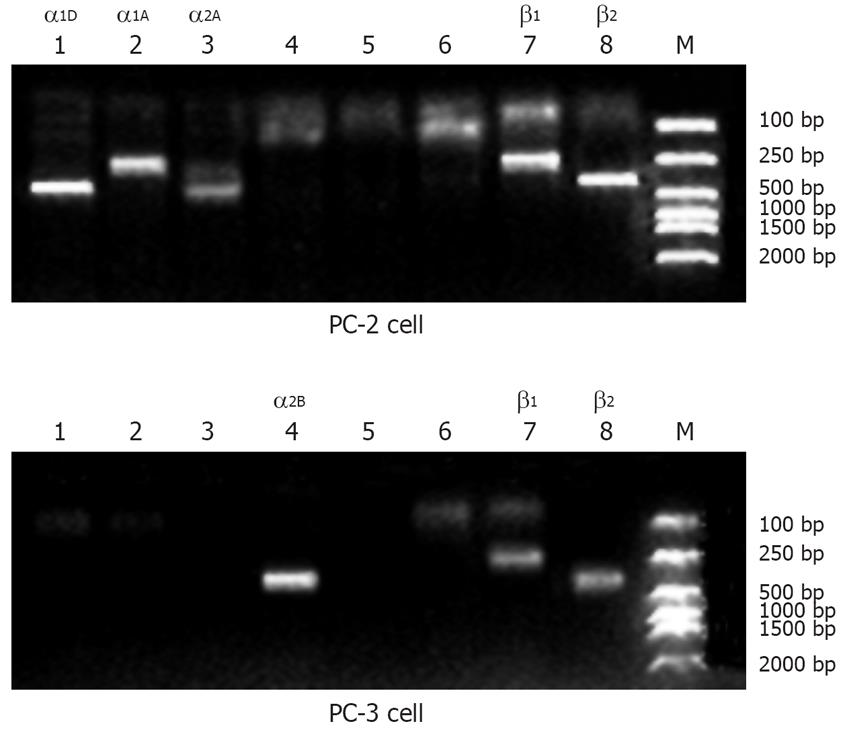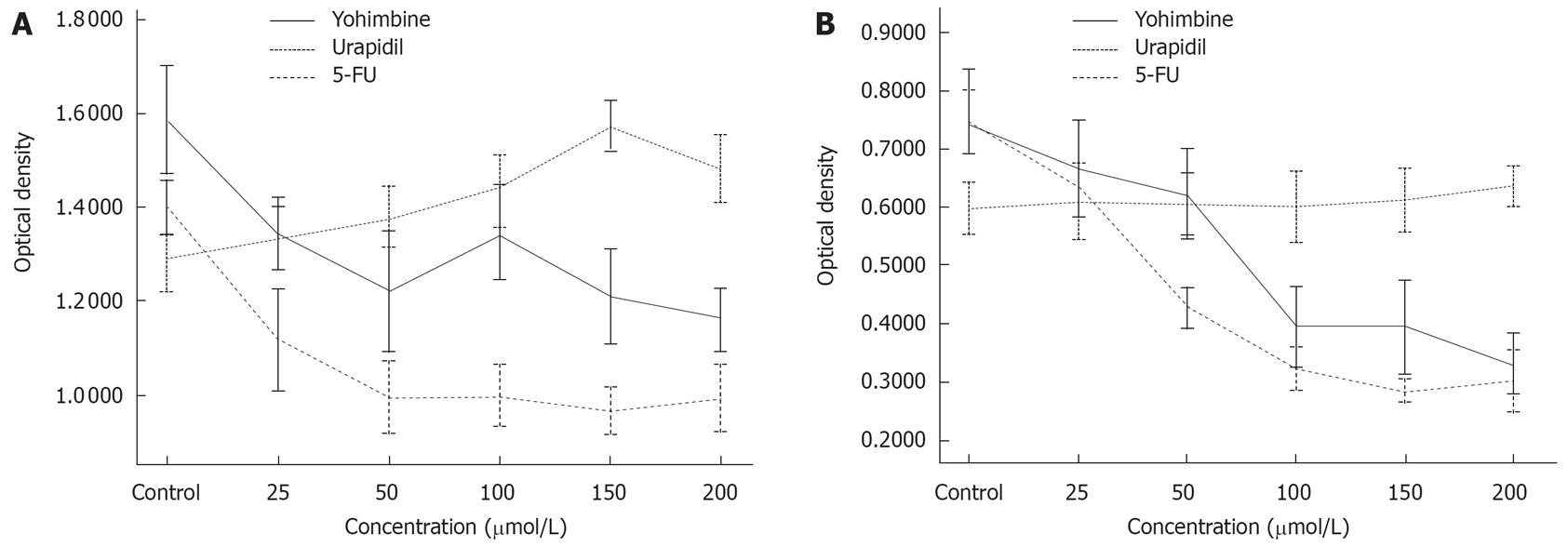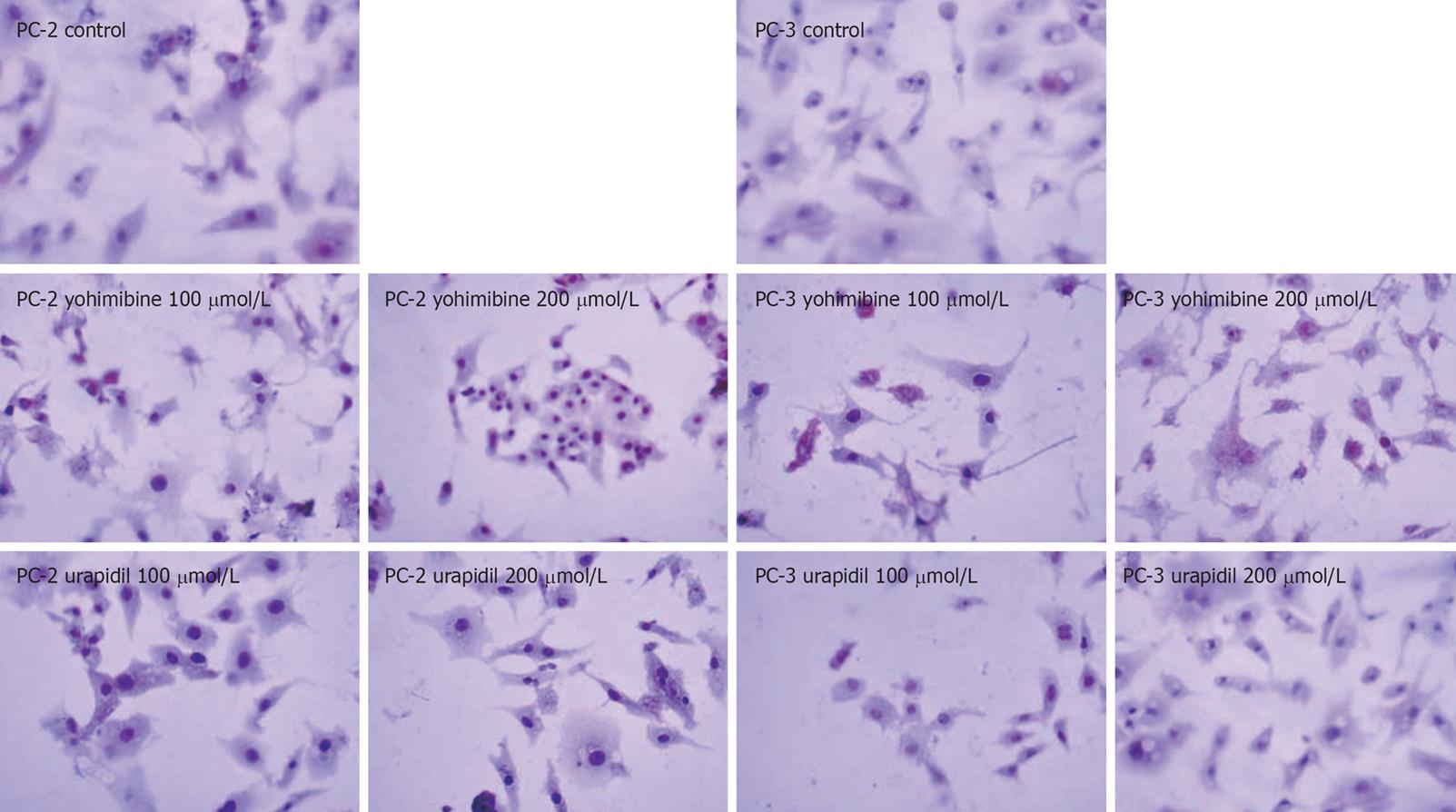Copyright
©2008 The WJG Press and Baishideng.
World J Gastroenterol. Apr 21, 2008; 14(15): 2358-2363
Published online Apr 21, 2008. doi: 10.3748/wjg.14.2358
Published online Apr 21, 2008. doi: 10.3748/wjg.14.2358
Figure 1 Expression of mRNA in adrenoceptors of human ductal pancreatic adenocarcinoma cell lines PC-2 and PC-3 by RT-PCR.
Lanes 1-8 represent the α1D-, α1A-, α2A-, α2B-, α2C-, α1B-, β1-, and β2-adrenoceptor subtypes, respectively. Lane maker = 100 bp DNA ladder. PC-2 expressed mRNA in α1D-, α1A-, α2A-, β1-, and β2-adrenoceptors and PC-3 expressed mRNA in α2B-, β1-, and β2-adrenoceptors.
Figure 2 MTT assay shows that PC-2 cells treated with urapidil hydrochloride for 24 h could increase cellular proliferation in a concentration-dependent manner.
Yohimbine inhibited the proliferation of PC-2 cells (A) and urapidil hydrochloride had no effect on PC-3 cell lines while the proliferation of PC-3 cell lines was inhibited by yohimbine (B).
Figure 3 TUNEL assay showing apoptotic PC-2 and PC-3 cells after treatment with 100 &mgr;mol/L urapidil hydrochloride and yohimbine for PC-2 cells and 100 &mgr;mol/L yohimibine and 100 &mgr;mol/L urapidil for PC-3 cells compared with control group.
Figure 4 Apoptotic PC-2 and PC-3 cells after treatment with 200 &mgr;mol/L urapidil hydrochloride (A) and 200 &mgr;mol/L yohimbine (B) for PC-2 cells and 200 &mgr;mol/L yohimibine for PC-3 cells (C) detected by FCM.
Significant apoptosis was induced by yohimbine on both PC-2 and PC-3 cells, whereas urapidil hydrochloride had no apoptotic effect on PC-2 cell.
-
Citation: Shen SG, Zhang D, Hu HT, Li JH, Wang Z, Ma QY. Effects of α-adrenoreceptor antagonists on apoptosis and proliferation of pancreatic cancer cells
in vitro . World J Gastroenterol 2008; 14(15): 2358-2363 - URL: https://www.wjgnet.com/1007-9327/full/v14/i15/2358.htm
- DOI: https://dx.doi.org/10.3748/wjg.14.2358












